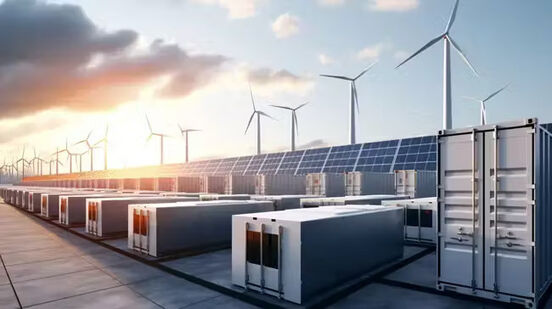


From Backup to Backbone: The Rise of Battery Storage in Industrial and Utility Energy Plans
In the past, battery storage was mostly seen as a “just-in-case” solution, a backup plan for power cuts or emergencies. But that view is changing fast.
Today, battery storage is no longer just a supporting act, but it is becoming the main player in industrial and utility energy strategies. In fact, it’s shaping up to be the backbone of modern wind and solar energy systems by helping industries cut costs, ensure power stability, and transition to cleaner energy.
As industries and utilities shift towards renewable energy, one big challenge stands in the way: solar and wind don’t produce power 24/7. The sun doesn’t shine at night, and wind doesn’t blow on command. Battery storage is the missing link that fills this gap.
By storing excess power when the sun is shining or the wind is blowing, and releasing it when demand spikes or supply drops, batteries provide round-the-clock reliability. This is especially important for industries where downtime can cost crores and power stability is non-negotiable.
In the first quarter of 2024 alone, India’s energy storage capacity reached 219 MWh, and the number is expected to grow further. According to the National Electricity Plan, our country requires 74 GW/411 GWh of energy storage by 2032 to support the planned expansion of renewable energy.
For a long time, battery storage was considered expensive. But now, costs have come down sharply. In fact, battery pack prices have fallen by more than 80% in the last decade, making it far more viable to use for renewable energy in India.
At the same time, batteries now help businesses:
This means battery systems are not just cutting expenses — they’re unlocking operational flexibility and even new revenue opportunities.
Forward-thinking companies are already making moves. Take AMPIN Energy Transition, for instance, a company leading India’s renewable revolution by integrating solar battery storage with clean energy.
It is working on dedicated battery storage projects for both industrial clients and grid-connected systems. One such project is a 250 kWh standalone Battery Energy Storage System (BESS) at POWERGRID Township. This system is designed to replace diesel generators entirely, providing clean backup without the noise, pollution, or running costs of traditional DG sets.
It is also going big with its 100MW ISTS-connected Wind-Solar Hybrid project under the SECI Hybrid 6 Peak Power tender. To ensure peak-hour power supply, the project will include at least 100 MWh of battery storage, giving clients reliable power even when the grid can’t keep up.
For industries that can’t afford power fluctuations, like manufacturing units, data centres, or large commercial setups, such integrated solar battery backup solutions are a must.
Also Read: Building the Future, One Cell at a Time: Why Solar Manufacturing is Now Mission-Critical
India’s policymakers are also recognising the critical role of the battery energy storage system. The government has rolled out schemes like:
With policy support and private innovation working together, storage is no longer on the sidelines, it’s front and centre.
For C-suite leaders, business owners, and plant heads looking to future-proof their energy supply, energy storage systems aren’t a luxury anymore but a smart investment.
What sets AMPIN Energy Transition apart is its full-stack approach, from customised renewable energy plans to tailored storage systems. Whether you’re looking to:
These solutions are designed to deliver reliability without compromise.
